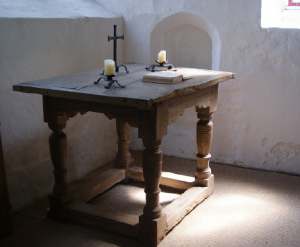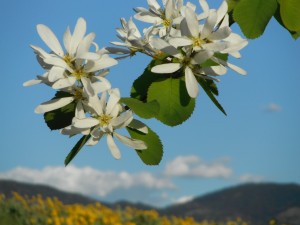On Wednesday last I had the occasion to give a presentation to a workshop “Advancing Watershed Sustainability” organized by the Fraser Basin Council (FBC) and the BC Wildlife Federation (BCWF). During the first half of the day, several presentations described work that the FBC and BCWF were doing to support collaborative watershed governance. In the afternoon, three presentations explored the scientific and policy environment that surrounds efforts to develop collaborative watershed governance.
I was asked to speak about water shortages, and given the conference theme, focused my short talk on the Water Sustainability Act (WSA) and the main option for a binding alternative to the provisions of the WSA, Water Sustainability Plans.
The Water Sustainability Act is really an act about managing water during shortages. Much of the act is about who can have a licence, what the conditions are around those licences, penalties for violations of those conditions, etc. However, the whole point of licences is that they are a means of allocating water between users, and in particular how those users will be prioritized when there is a water shortage.
 During a shortage, the law of the land is an ‘attenuated FITFIR’. All licences have a priority date, and excepting the attenuations, the most junior licence is the first one cut off if there is insufficient water to satisfy all licences. The attenuations consist of ways that the government can put the environment first by requiring minimum stream flows to be considered, taking actions to protect the environment during times of shortage, and providing priority to basic human needs. This attenuated FITFIR is the provincial water shortage management plan.
During a shortage, the law of the land is an ‘attenuated FITFIR’. All licences have a priority date, and excepting the attenuations, the most junior licence is the first one cut off if there is insufficient water to satisfy all licences. The attenuations consist of ways that the government can put the environment first by requiring minimum stream flows to be considered, taking actions to protect the environment during times of shortage, and providing priority to basic human needs. This attenuated FITFIR is the provincial water shortage management plan.
 Water Sustainability Plans provide an alternative. Communities can get together and come up with a plan that they like better than the shortage management set out in the WSA. There seems to be broad scope in the act for the types of water management that communities can choose to implement. However, there are a couple of parts of the act that these communities must consider, with ‘must’ the word used in the act.
Water Sustainability Plans provide an alternative. Communities can get together and come up with a plan that they like better than the shortage management set out in the WSA. There seems to be broad scope in the act for the types of water management that communities can choose to implement. However, there are a couple of parts of the act that these communities must consider, with ‘must’ the word used in the act.
From the act:
Submission of proposed plan to minister
74. (1) After a proposed water sustainability plan has been prepared, the responsible person may submit the proposed plan to the minister.
(2) If a proposed plan submitted to the minister under subsection (1) recommends a significant change in respect of a licence or a drilling authorization and the holder of the licence or drilling authorization has consented to the change, the proposed plan must be accompanied by
(a) a copy of the written consent of the holder of the licence or drilling authorization, and
(b) a detailed proposal assigning to each person or other entity who would benefit from implementation of the recommendation some or all of the responsibility for compensating the licensee or drilling authorization holder, consented to in writing by each such person.
(3) If a proposed plan submitted to the minister under subsection (1) recommends a significant change in respect of a licence or a drilling authorization and the holder of the licence or drilling authorization has not consented to the change, the proposed plan must be accompanied by
(a) a list of the affected licences and drilling authorizations,
(b) a statement of the public benefit from the significant change, and
(c) a statement of any available source of funding to pay compensation or for compensatory measures for the involuntary significant changes.
I think that this section is important. If the plan impacts on existing licence holders, then either those licence holders need to agree to those impacts and accept the compensation – if any – set out in the plan, or the plan has to include provisions to compensate licence holders who don’t agree to the plan. In essence, the WSA sets out conditions under which water licences can be expropriated as part of the implementation of a plan, and like expropriation of land, compensation for those whose licences are expropriated needs to be planned for.
What does this mean for Water Sustainability Plans? I think it has two important implications. First, it means that WSPs are not a cheap way to put restrictions on water licence holders that a community doesn’t like. If a licence holder does not want to participate in a plan, then getting a plan implemented means providing the minister with a compelling case that there are resources available to adequately compensate such licence holders for the loss they will suffer. Going to the minister with a strong popular mandate from the community is not going to be sufficient. That popular mandate has to be accompanied by an ability to mobilize resources sufficient for the necessary compensation.
Does this mean that the WSA essentially delivers a Water Sustainability Plan process wrapped in a coffin? I don’t think so. Many efforts at collaborative watershed governance fail because those who are asked to give something up either refuse to participate or participate only to the extent of protecting their interests. The provisions of the Water Sustainability Plan mean that these people need not worry that something will be imposed on them that makes them worse off. This may create an opportunity for those who will suffer from less access to water to clearly and honestly describe these impacts, and for those who want something different to listen and look for ways to offset these impacts.
After I gave my presentation, some in the audience seemed quite disappointed with my ‘dose of reality’. True collaborative watershed governance must involve everyone and address all their impacts. Existing licence holders are part of the community, and need to  be part of the collaboration. I think that the compensation requirement in Water Sustainability Plans actually opens the door for true collaborative governance, where all interests are included and respected. Lets hope …
be part of the collaboration. I think that the compensation requirement in Water Sustainability Plans actually opens the door for true collaborative governance, where all interests are included and respected. Lets hope …
The presentation is available here: Managing Water Shortages.

 Follow
Follow
 As a general rule, I am quick to dismiss pretty much everything that has a supernatural
As a general rule, I am quick to dismiss pretty much everything that has a supernatural

 I also wonder if hearing these stories and participating in these traditions, stories and traditions that emerged in the places we live, can be a valuable part of connecting us to this place. Those of us who are immigrants have brought with us our stories and traditions. Those may have been valuable in helping us to thrive in the places we came from. However, they may not be the best fit locally. Maybe if we heard these locally rooted stories ourselves, on a regular basis, maybe we would be more connected to where we live. Maybe then we would be emotionally tied to the health of our local ecosystems and be more willing to work to protect them. This is consistent with emerging research showing how fostering environmental empathy can lead to an increase in willingness to change behavior.
I also wonder if hearing these stories and participating in these traditions, stories and traditions that emerged in the places we live, can be a valuable part of connecting us to this place. Those of us who are immigrants have brought with us our stories and traditions. Those may have been valuable in helping us to thrive in the places we came from. However, they may not be the best fit locally. Maybe if we heard these locally rooted stories ourselves, on a regular basis, maybe we would be more connected to where we live. Maybe then we would be emotionally tied to the health of our local ecosystems and be more willing to work to protect them. This is consistent with emerging research showing how fostering environmental empathy can lead to an increase in willingness to change behavior. I have heard my colleague Jeannette Armstrong speak on a couple of occasions where she describes indigeneity being about connection to place, not about race. I am beginning to wonder if that connection needs to be founded in stories and traditions that are rooted in this place. The Peach Festival, the Wine Festival, etc. are great events that connect us with the landscape as we have modified it. However, they don’t connect us to the natural environment as it would exist. Maybe we need a festival around the blossoming of the arrow leaf balsam root and the saskatoon bush, natural heralds of the season here in the Okanagan. Maybe we need to hear stories about the salmon,the sagebrush, and the ponderosa. Maybe if we are more connected to these stories, we’ll feel a greater loss when these are lost, and we will be more willing to work to protect the natural Okanagan environment.
I have heard my colleague Jeannette Armstrong speak on a couple of occasions where she describes indigeneity being about connection to place, not about race. I am beginning to wonder if that connection needs to be founded in stories and traditions that are rooted in this place. The Peach Festival, the Wine Festival, etc. are great events that connect us with the landscape as we have modified it. However, they don’t connect us to the natural environment as it would exist. Maybe we need a festival around the blossoming of the arrow leaf balsam root and the saskatoon bush, natural heralds of the season here in the Okanagan. Maybe we need to hear stories about the salmon,the sagebrush, and the ponderosa. Maybe if we are more connected to these stories, we’ll feel a greater loss when these are lost, and we will be more willing to work to protect the natural Okanagan environment.